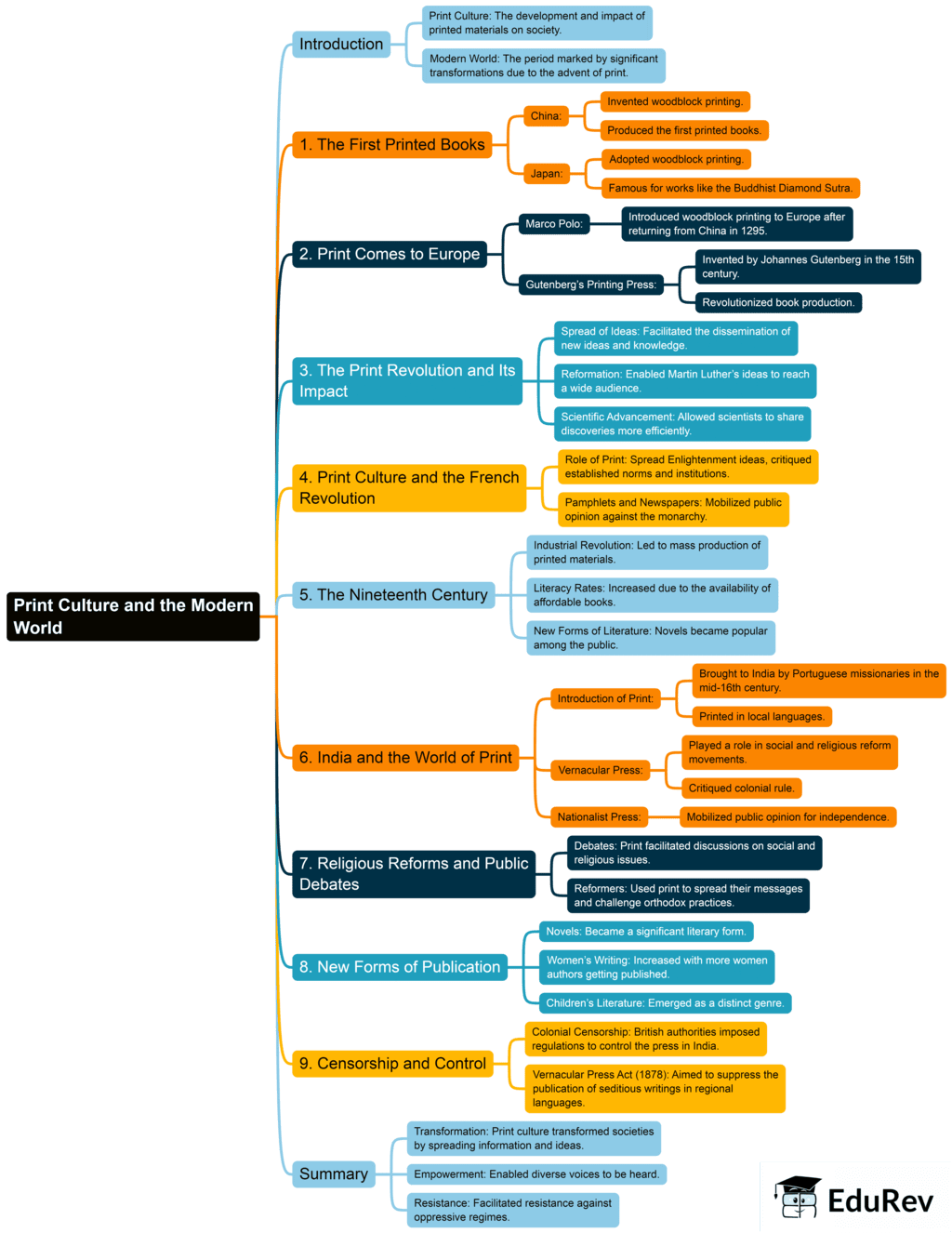UPSC Exam > UPSC Notes > Class 6 to 12 NCERT Mindmaps for UPSC Preparation > Mind Map: Print Culture & the Modern World
Mind Map: Print Culture & the Modern World | Class 6 to 12 NCERT Mindmaps for UPSC Preparation PDF Download

The document Mind Map: Print Culture & the Modern World | Class 6 to 12 NCERT Mindmaps for UPSC Preparation is a part of the UPSC Course Class 6 to 12 NCERT Mindmaps for UPSC Preparation.
All you need of UPSC at this link: UPSC
FAQs on Mind Map: Print Culture & the Modern World - Class 6 to 12 NCERT Mindmaps for UPSC Preparation
| 1. What is print culture and how did it influence the modern world? |  |
Ans.Print culture refers to the mass production and distribution of written texts through printing technology. It significantly influenced the modern world by facilitating the spread of ideas, promoting literacy, and enabling the democratization of knowledge, which ultimately contributed to social, political, and cultural changes.
| 2. How did the invention of the printing press change society? |  |
Ans.The invention of the printing press in the 15th century revolutionized the way information was disseminated. It made books more accessible and affordable, leading to increased literacy rates, the rise of public education, and the spread of reformist ideas, which played a crucial role in events like the Reformation and the Enlightenment.
| 3. What role did print culture play in shaping public opinion? |  |
Ans.Print culture played a vital role in shaping public opinion by providing a platform for diverse viewpoints and encouraging debate. Newspapers, pamphlets, and books allowed for the rapid dissemination of information and ideas, enabling the public to engage with political and social issues, thereby influencing collective attitudes and actions.
| 4. How has digital technology impacted print culture in the modern world? |  |
Ans.Digital technology has transformed print culture by shifting the focus from traditional print media to digital formats, such as e-books, online articles, and social media. This shift has increased the speed of information dissemination, altered reading habits, and changed the way audiences interact with texts, leading to new forms of engagement and communication.
| 5. In what ways did print culture contribute to the development of national identities? |  |
Ans.Print culture contributed to the development of national identities by promoting the use of vernacular languages and regional literature, thus fostering a sense of shared culture and belonging. Printed materials helped unify populations around common narratives, histories, and values, which were essential for the formation of modern nation-states.
Related Searches

















